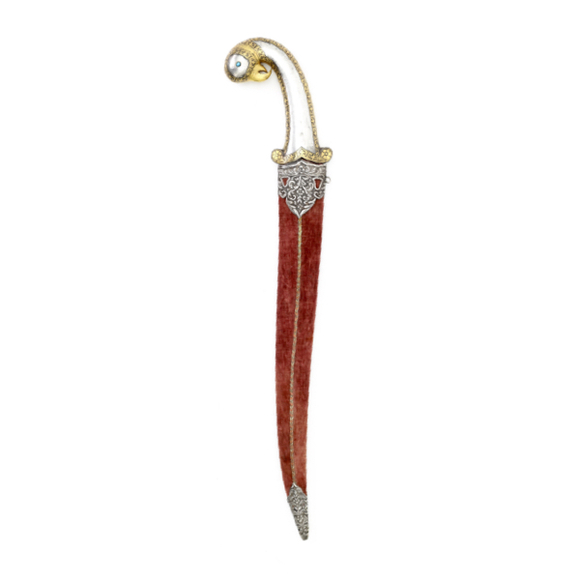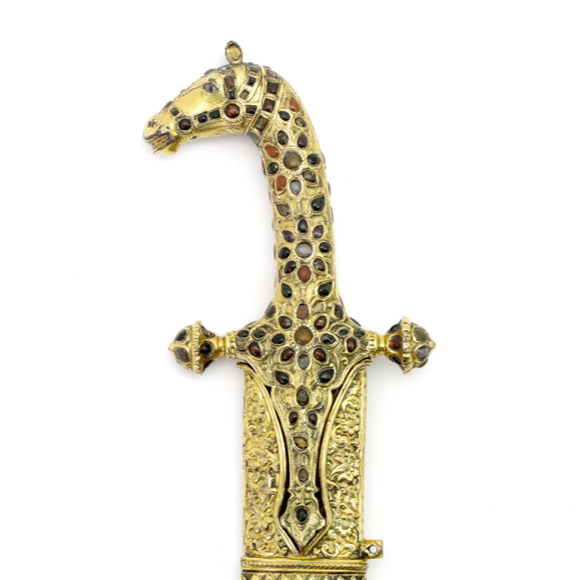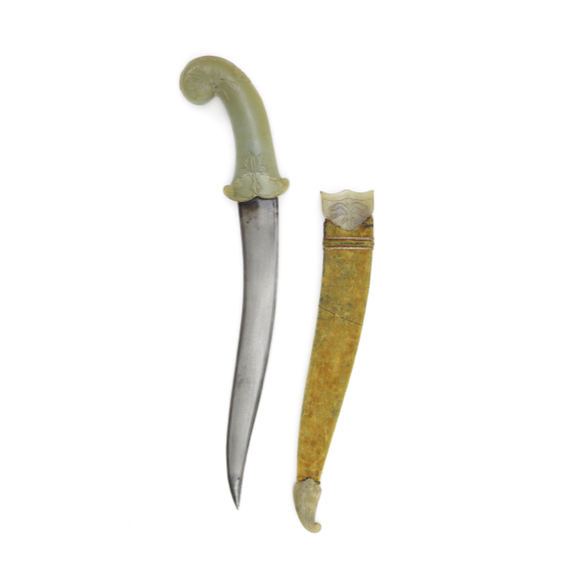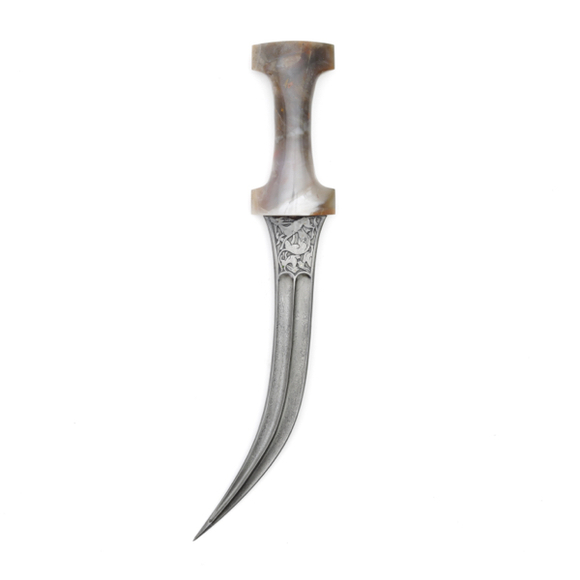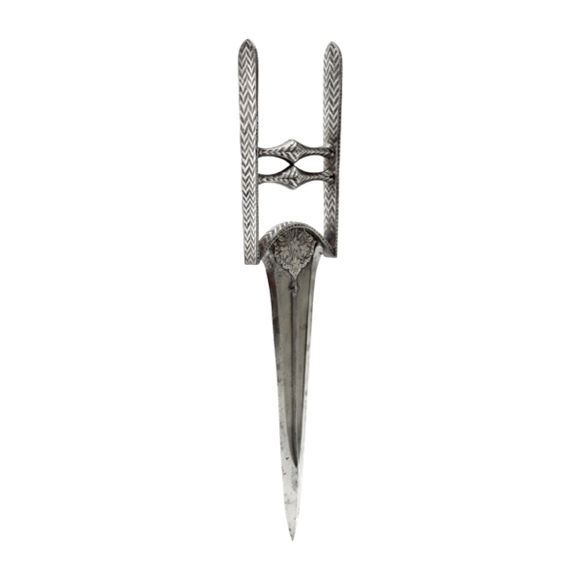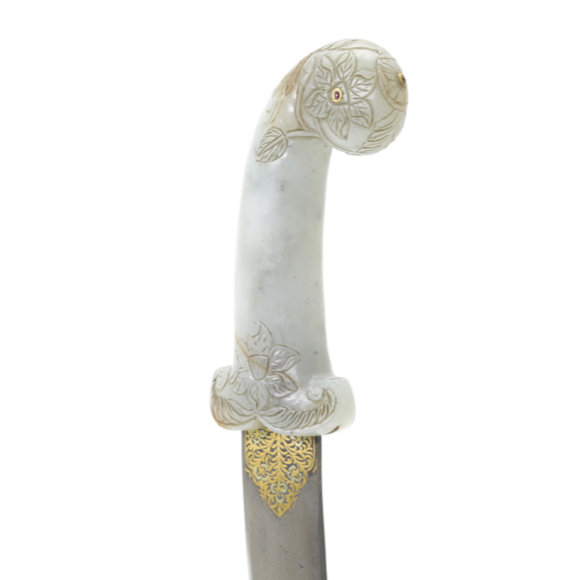Description
Wootz is the commonly used name for a type of crucible steel with an elaborate pattern.1
It was usually made by putting magnetite and leaves of certain plants in a crucible with shards of glass. Upon heating, the iron and glass would melt, and the glass would form a barrier on top so that nothing escaped, and the iron and leaves were left to react with each other. We now know that the process actually created carbon nanotubes in the steel that made it so tough.2
Not everyone could forge out a wootz billet; if it got heated too high, the carbon nanotubes would get lost, and it would turn into normal steel. This may explain why even though wootz was probably traded to China and Japan, we don't tend to see the wootz patterns on any swords from those cultures.
The resulting billet could be forged into a blade with a very high carbon content, which was both hard and tough.
Notes
1. The word first appears in Pearson's lecture to the Royal Academy on Indian steel, published 1795. See R. Hadfield; Faraday and His Metallurgical Researches. London, Chapman and Hall, 1931.
2. M. Reibold, P. Paufler, A. A. Levin, W. Kochmann, N. Pätzke & D. C. Meyer; Carbon nanotubes in an ancient Damascus sabre. Nature, 15 November 2006.
In other languages
Chinese: Bīntiě (鑌鐵)
Nepali: Phaulād (फौलाद्)
Persian: Faulād
History
The first wootz was believed to have come from Southern India around 500 B.C.1
From there, it soon spread to Sri Lanka and up north to Golconda. By the 12th century A.D., Indian wootz was exported widely to the middle east and got known as the best steel in the world.2
Eventually, wootz making got picked up in Persia, where the high-contrast watering was perfected. By the 18th century, imported Persian wootz from Isfahan was the most prized steel in India.
Notes
1. J.-S. Park, K. Rajan, R. Ramesh; High-carbon steel and ancient sword-making as observed in a double-edged sword from an Iron Age megalithic burial in Tamil Nadu, India. Archaeometry, 17 October 2019.
2. Sharada Srinivasan & Srinivasa Ranganathan; India's Legendary Wootz Steel: An Advanced Material of the Ancient World. Published in Iron & Steel Heritage of India, 2004. Pages 69–82.
Further reading
Ann Feuerbach, R. Balasubramaniam & S. Kalyanaraman. Origin of the terms wootz, hinduwani & pulad. Indian Journal of History of Science, 42.3.2007. Pages 377-286.

